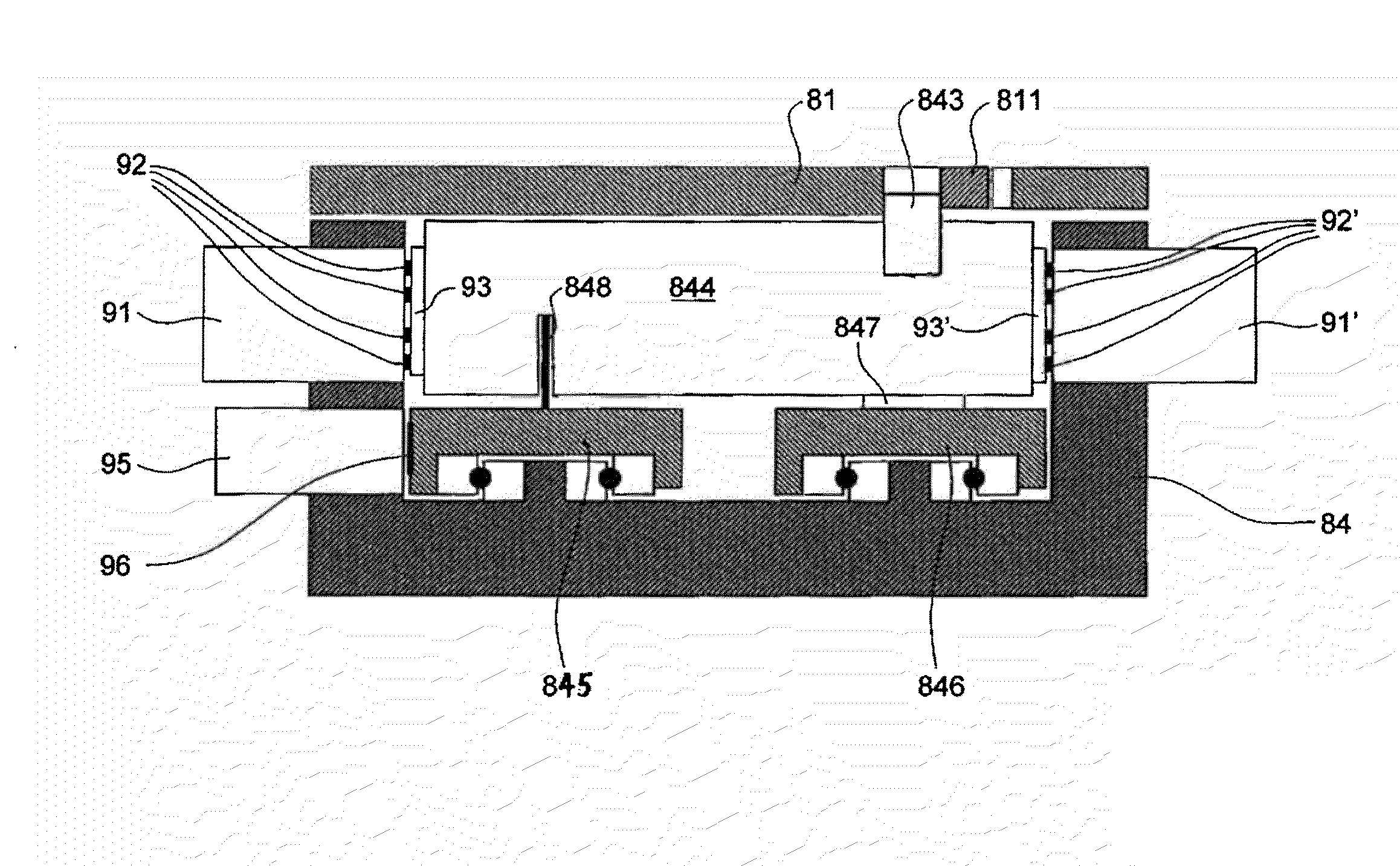Charged Particle Beam Lithography System and Target Positioning Device
- Summary
- Abstract
- Description
- Claims
- Application Information
AI Technical Summary
Benefits of technology
Problems solved by technology
Method used
Image
Examples
Embodiment Construction
[0065]FIG. 1 schematically shows a system 1 for charged particle beam lithography, using a massive array of parallel charged particle beams, so called cp-beams. In the present example the charged particle beams are electron beams. One of such cp-beams 2 is represented in FIG. 1.
[0066]All cp-beams are controlled separately by means of a modulator in a known manner, enabling a writing of a desired pattern on a target 3, in this case a wafer. The main advantages of this system compared to the commonly used optical systems are the writing of very small structures and the absence of expensive masks. The latter significantly reduces the start-up costs of a batch, making the present system highly advantageous for prototyping and medium volume production.
[0067]The system according to the invention consists of three major subsystems, namely a data path subsystem (not shown in FIG. 1), a charged particle optical column 4, for example an electron-optical column, and a target positioning device...
PUM
 Login to View More
Login to View More Abstract
Description
Claims
Application Information
 Login to View More
Login to View More - R&D
- Intellectual Property
- Life Sciences
- Materials
- Tech Scout
- Unparalleled Data Quality
- Higher Quality Content
- 60% Fewer Hallucinations
Browse by: Latest US Patents, China's latest patents, Technical Efficacy Thesaurus, Application Domain, Technology Topic, Popular Technical Reports.
© 2025 PatSnap. All rights reserved.Legal|Privacy policy|Modern Slavery Act Transparency Statement|Sitemap|About US| Contact US: help@patsnap.com



